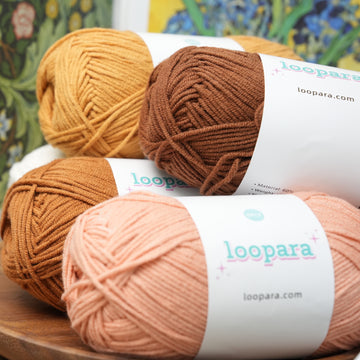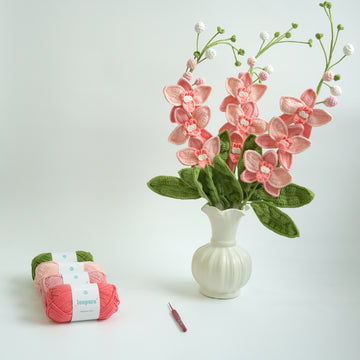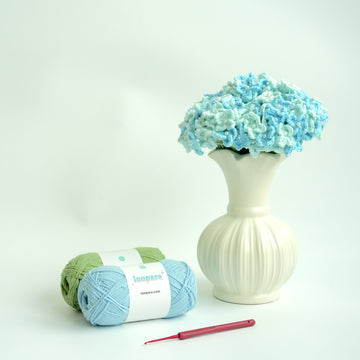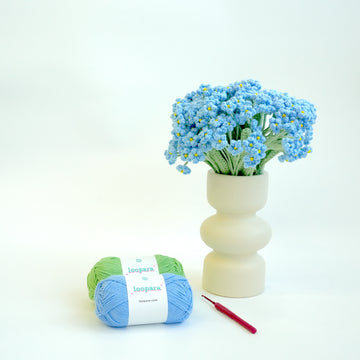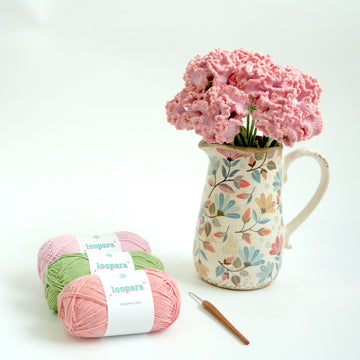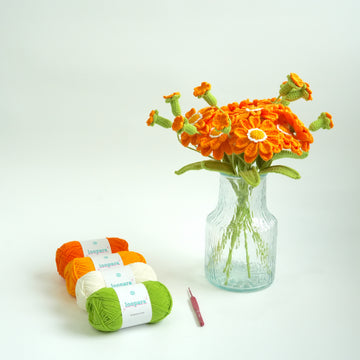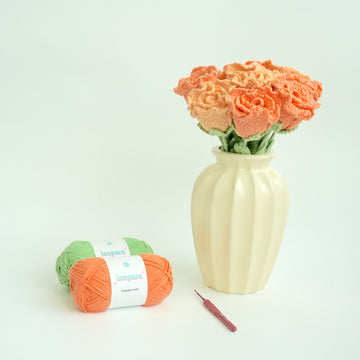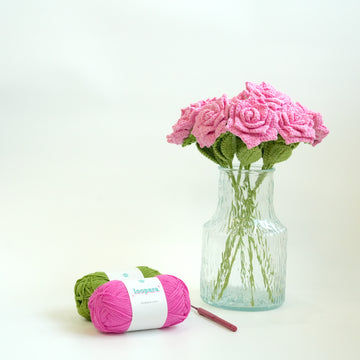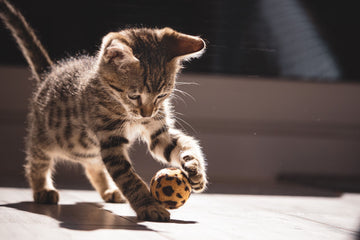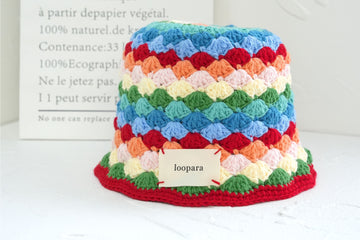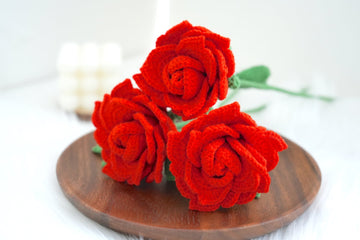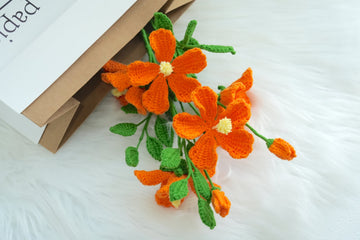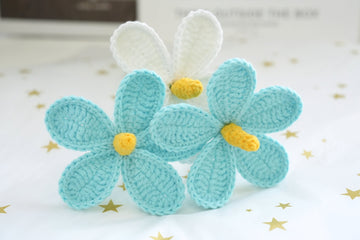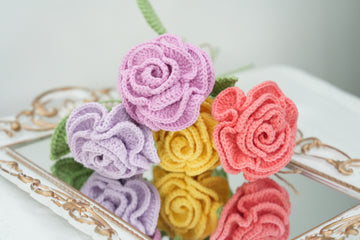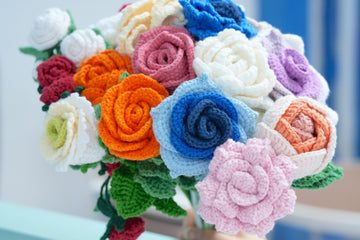Crocheting can be a lot of fun and very rewarding. But if you’re thinking of taking it up, you might also be asking yourself, “Is crocheting hard?”
The short answer is that it depends! Everyone’s different, and while some people find they have a natural aptitude, for others it’s more of a struggle.
But the good news is that pretty much anyone can become a proficient crocheter if they practice. And there are plenty of simple patterns out there that beginners can get to grips with and use to produce great results.
In this article, we set out some approaches to learning the craft. And we’ll explain some of the fundamentals it helps to understand before you get started.
Learning how to crochet
As with almost any craft, there are plenty of different ways to learn how to crochet. Some people like reading words and diagrams, others prefer videos or in-person courses. And for some, nothing is as effective as picking up the crochet hook themselves and getting stuck in.
The internet is a great source of information. On our website, you’ll find a whole host of informative articles about different aspects of crocheting.
And check out our YouTube for videos from dedicated crocheters showcasing different techniques. Here is our YouTube channel.
To get the most out of these resources, though, it’s a good idea to get a grounding in crochet terminology. That will help you understand the basics and identify the topics you want to explore in more detail.
Here’s our guide to some of the key elements as you start your crocheting journey.
1. Key equipment for crocheting
You don’t need a lot of expensive kit to learn to crochet. In fact, all you really need to get started is a hook and yarn.
But which hook and which yarn?!
There are a lot of different options out there. Let’s take a look at these crucial ingredients in more detail.
The basics of crochet yarn

Yarn comes in a range of different weights (which really means “thicknesses”), colors and properties.
Some types of yarn are better for some kinds of projects than others. If you want to make crochet jewelry, for example, a light, delicate yarn will allow you to get lots of detail in your design. If you want a cosy blanket, a heavier yarn will make it warmer.
Yarn is described in lots of different ways, with a host of different words you may not have come across before. Prepare to get acquainted with DK, worsted, fingerling and Aran – to name but a few. And to make life more interesting, some people use different terms for the same thing!
But there’s no need to get bogged down in all of this when you start out. All you need to know is how to choose a yarn that’s suitable for a beginner.
It’s a good idea to use a light-colored yarn for your first projects. That will make it easier to see and count your stitches.
Cotton yarns are good for the same reason. With fluffier yarns like mohair, the stitches can appear to merge together.
Using a medium-weight yarn is a good option too. Look for yarns called “DK” or numbered “4”. These have a good balance between being weighty enough to stay in place as you work, but still being light enough to manipulate easily.
Here is our 4 ply milk cotton yarn for beginners.
Yarn color batches
Yarn is dyed in batches. This probably won’t make much difference to you when you start crocheting. You’ll just pick a color you like and start experimenting with different stitches.
But when you get onto making bigger projects, checking the batch number on the label of the skein (the bundle of yarn) can be very important. If you’re making an item in a single color, you’ll want every skein to be from the same dye batch.
If it isn’t, you might find your sky blue baby blanket has a subtle color change halfway down!
The different types of crochet hooks

The crochet hook is the tool you use to make your stitches. There are two basic types of hook:
- Tapered hooks – also known as Boye hooks
- In-line hooks – also known as Susan Bates hooks.
The difference between the two is in the shape of what’s known as the “throat” of the hook, near the top. For a beginner, the key thing to know is that the different styles of hook suit different people.
Some crochet tutors say beginners usually find in-line hooks easier to use. Others say it depends on the individual.
When you start crocheting, be prepared to spend some time getting comfortable with your hook. Five minutes practicing is very unlikely to get you good results. Stick with it for 15 or 20 minutes, and you might start to feel as if you’re getting somewhere.
But if you’ve been plugging away for ages and don’t feel it’s getting any easier, try a different type of hook. You might find the other style suits you better.
Hooks also come in a range of different sizes. An H-8 hook (also referred to as a 5 mm hook) is a good choice for a beginner.
2. Different strokes – or grips – for different folks
Their preferred type of hook isn’t the only thing on which crocheters differ. Different people also hold the hook in different ways.
Some prefer to hold the hook as you would a pen. This is (unsurprisingly) referred to as a “pen grip”. Others prefer to hold it as though it were a knife being used to cut up their dinner. This is – you’ve guessed it – the “knife grip”.
There’s no right or wrong way to hold your crochet hook. The important thing is that it works for you. And some people find their preferred grip changes depending on whether they’re using a tapered or in-line hook.
If you’re just starting out and are finding it tough to get into your crocheting groove, it can help to watch other crocheters. There are lots of videos online showing people crocheting. So if your current grip isn’t working for you, try copying some different styles.
3. Keeping it simple

As with any new skill, try to resist the temptation to run before you can walk. That crocheted hat might look super-cute, but you’ll probably find it less frustrating to start with something easier.
Most people begin by crocheting what are known as “granny squares”. These are simple squares of fabric that can be stitched together to make bigger projects, like blankets or scarves.
Another good option for beginners is crochet “chains”. These are just what they sound like – chains of fabric created using the chain stitch, one of the easiest crochet stitches.
They’ll allow you to practice what’s known as “yarning over” – wrapping the yarn over your hook. And you’ll learn about how to get the right tension in each stitch.
Chains also make good bracelets, so you’ll have something to show for your hard work.
4. Basic crochet stitches
There’s a multitude of different crochet stitches that can be used to create different effects. But when you’re starting out, here are four to concentrate on mastering:
- The single crochet
- The half double crochet (yes, that’s different to the single!)
- The double crochet
- The treble crochet
Just be warned: these are all terms used in the US. If you’re using a crochet pattern from the UK, it will call these stitches different things.
Confusingly, the US single crochet is the same as the UK double crochet. What’s called the double crochet in the US is the treble in the UK. And the US treble is the UK double treble!
Most patterns will state whether they’re using US or UK terminology. If they don’t, the appearance of the term “single crochet” means it’s a US version. The single crochet stitch doesn’t exist in UK terminology.
Make sample swatches using your new stitch before you get stuck into a more complicated project. That will help you get comfortable with the technique before you need to start worrying about counting stitches.
Check our 44 different types of crochet stitches for beginners (step by step image and Video toturial)
5. Don’t be afraid to make mistakes
Everyone makes mistakes – they’re part of the learning process. Yes, it can be frustrating when you go wrong and find yourself having to unpick half an hour’s work. But it’s exactly by doing that that you’ll learn more about your craft.
And it’s good to remember that even experienced crocheters regularly unpick their stitches. There’s even a fun term for it – “frogging”. It’s called that because unpicking your work means you have to “rip it, rip it” – just like the “ribbit, ribbit” sound of a frog!
Crocheting can be hard – but it’s worth it!
There’s no denying that crocheting has its own language, techniques and equipment. That means there can be a lot to learn when you start out. But learning doesn’t have to be painful!
Take your time and be prepared to practice. No-one picks up a crochet hook and immediately completes the most complicated projects. But there are lots of fun and rewarding projects you can get your teeth into as a beginner.
Good luck on your crocheting journey.


